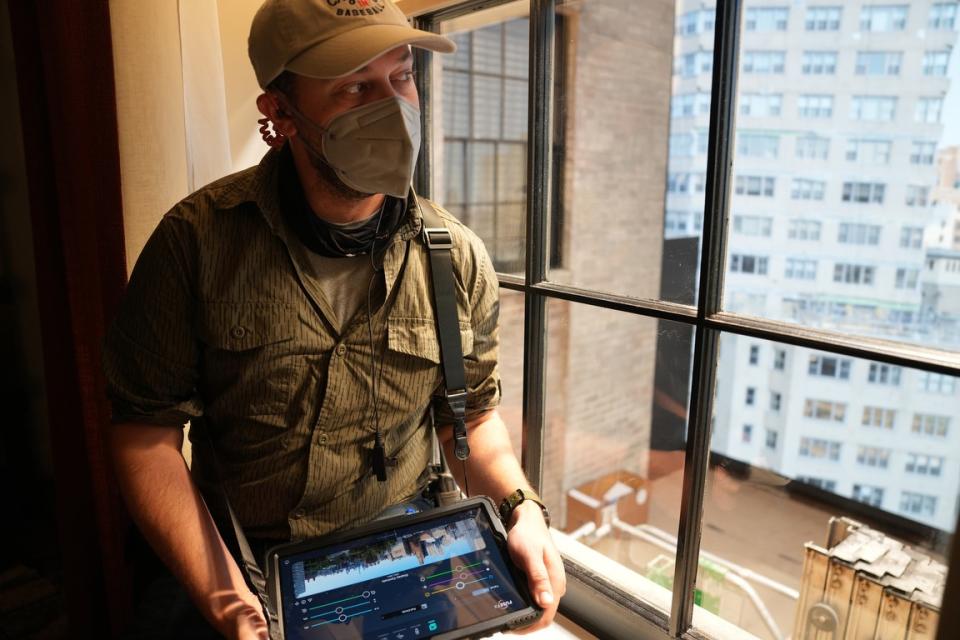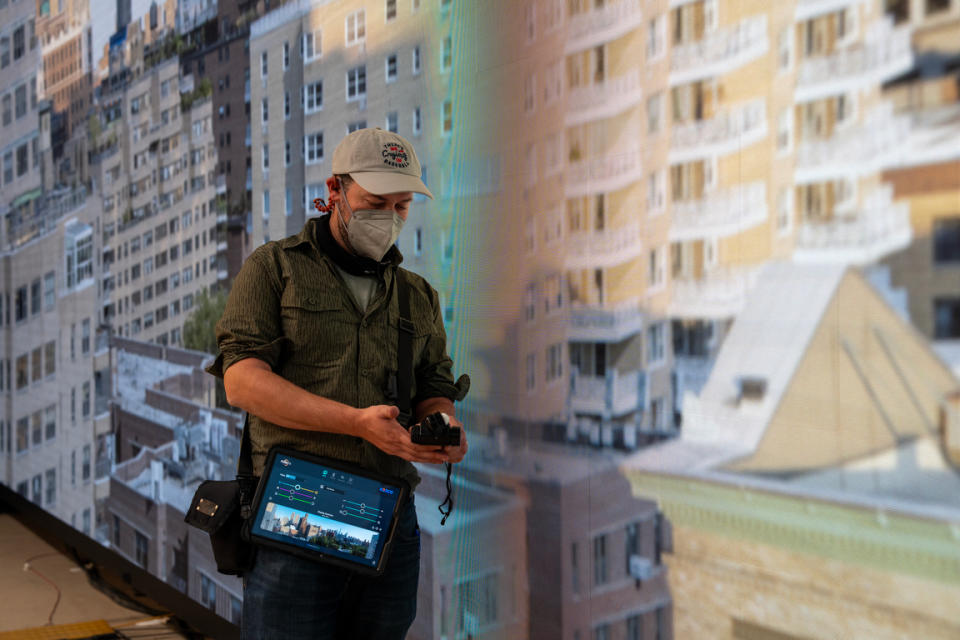Even the Manhattan Skyline Isn’t What It Seems in ‘Full Circle’

- Oops!Something went wrong.Please try again later.
Everyone is hiding something in twisty Max thriller “Full Circle” — right down to the view outside the Manhattan apartment of parents Sam (Claire Danes) and Derek (Timothy Olyphant).
“Full Circle” is the first production to tout Rosco’s RDX Lab System for interactive digital backgrounds on an LED wall inside the show’s crucial apartment set build. This is where Sam and Derek reside near Washington Square Park, their secrets unraveling after the botched kidnapping of their son, Jared (Ethan Stoddard).
More from IndieWire
The Safdies Drop Surprise Telemarketer Docuseries on HBO - Watch the Trailer
MHz Choice Is a Niche Streamer with a Confusing Name and a Cool Backstory
After first using LED wall tech on “Kimi,” director-cinematographer Steven Soderbergh returned to it for this crime thriller limited series loosely inspired by Akira Kurosawa’s “High and Low.” But this was a new software system and a different situation from the more elaborate 3D Volume demands of “Kimi.”
RDX, with software by FuseFX, allowed Soderbergh and gaffer Derek Gross to use an iPad app to project and alter high-resolution backdrop images in real-time on an LED screen (180 feet wide by 20 feet high) behind the apartment windows on a New York soundstage. Rosco teamed up with Carstage and Visual Alchemy to create a workflow that permitted RDX to run smoothly through Unreal Engine. The 2D images were turned over to the production and then adjusted as needed by Soderbergh on an array of windows in the kitchen, living room, and bedrooms.
“It became clear after a certain amount of scouting, when we found an apartment that I felt was a good template for the Browne family apartment in the neighborhood, that there was no way that anybody in that building was gonna sign off on shooting 20 to 25 days there,” Soderbergh told IndieWire. “So very quickly it was established, we gotta build that apartment. And we’ve gotta use this technology because there’s no way we spend so much in time there. There’s no way, if we’re just using trans lights, two-dimensional flat photographs that we’re pouring light onto that, that’s gonna look good.
“But I love what you get from [RDX] and the ability to go from one look to another in a matter of seconds,” Soderbergh continued. “Literally, I can move the image around, I can adjust the contrast, I can adjust the brightness, I can blow things up, I can shrink them. There’s no other way to get this interactive, refractive light bouncing around the room off the surfaces with that kind of technology.”

Rosco, which has amassed an extensive library of digital backdrops, expanded with RDX after providing Chicago L train assets for “The Batman.” Phil Greenstreet, Rosco’s head of development, Backdrops & Imaging, shot the Chicago L images and gained valuable insight about the volume from cinematographer Greig Fraser. After helping develop ILM’s game-changing StageCraft volume for “The Mandalorian,” he recommended a pop-up version for the film’s Gotham skyline. He told Greenstreet how it worked and encouraged him to provide his own cost-effective LED wall system.
For “Full Circle,” Greenstreet went on the location scout around the apartments near Washington Square Park and shot hundreds of images with the Fuji 100 GFX camera. The apartment set was modified with long hallways for Soderbergh’s roving camera.
“They didn’t want to be messing with motion,” Greenstreet told IndieWire. “They didn’t even want motion in the background, so the flags weren’t moving, the cars weren’t moving, you only see small slivers of cars in the distance anyway.”
Soderbergh’s gaffer, Gross, was impressed with RDX when it was first demoed at Cine Gear Expo in L.A. in 2022. “Steven shoots incredibly fast,” he told IndieWire. “We can do 10 pages and three company moves in a nine-hour day, and to keep up with the speed that Steven likes to shoot at, we needed something that was gonna be really quick and adjustable. I brought it up to him to see if it was anything that was interesting to him. And he wanted to implement it. We were lucky enough to be the first show using it.

“And, from an artistic aspect, it did everything that a volume would do as a multilayered still and motion image,” Gross continued. “After Phil did all of our shots from the apartment, the team at Rosco was able to merge into a seven-layer image for us that we could adjust on the fly. So it definitely helped us. He was able to present everything outside that window that Steven did wanna see, hide everything he didn’t, and keep up with his speed.”
Soderbergh was also able to plug in images into pre-existing scenes during reshoots requiring over-the-shoulder shots and close-ups. This was to accommodate a line or two for seamlessly adjusting the narrative or performance. “That’s something that’s really hard to do without this kind of technology…and all you’ve got to do is call it up on the iPad,” said Soderbergh in a prepared statement.
Additional reporting by Jim Hemphill.
Best of IndieWire
Quentin Tarantino's Unmade Movies: 21 Projects the Filmmaker Almost Directed
Christopher Nolan Movies, Ranked from 'The Dark Knight' and 'Tenet' to 'Dunkirk' and 'Oppenheimer'
Where to Watch This Week's New Movies, from 'Barbie' to 'Oppenheimer'
Sign up for Indiewire's Newsletter. For the latest news, follow us on Facebook, Twitter, and Instagram.

